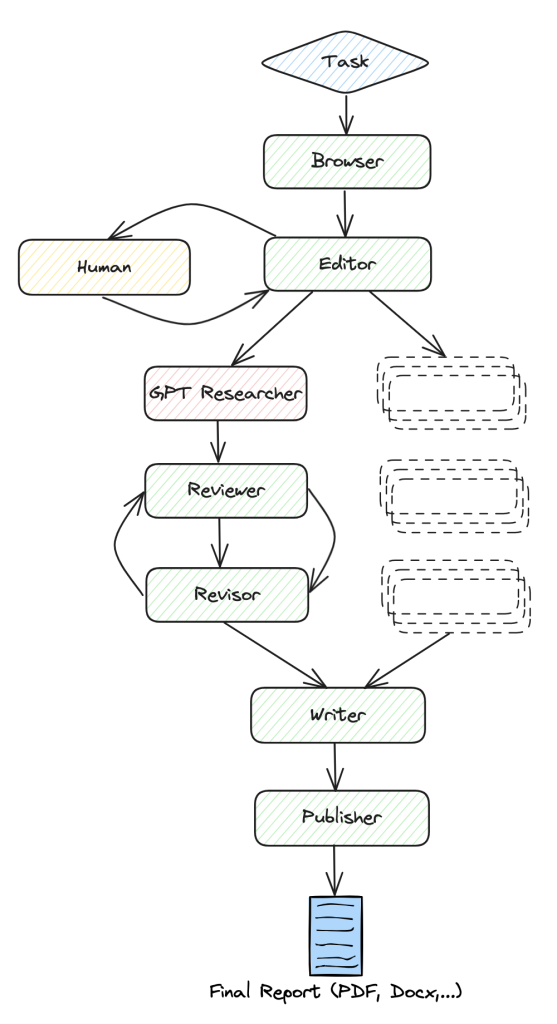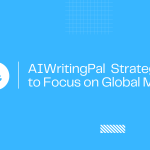In a world inundated with information, the challenge of sourcing unbiased, comprehensive data has become more critical than ever. Enter GPT Researcher, an autonomous research agent redefining how we approach and access information. Founded by Assaf, an expert with a decade-long career in building complex AI agents for top-tier tech companies, GPT Researcher addresses the inherent limitations of traditional search engines and aims to democratize research tools. In this exclusive interview, Assaf shares insights into the technology, development journey, and future direction of GPT Researcher, as well as his personal inspiration behind the project.
Q1: Could you introduce GPT Researcher and its primary functions? What unique challenges in research or AI does it aim to address?
Assaf: GPT Researcher is an autonomous agent designed for comprehensive web and local research on any given task. It represents a paradigm shift in automated research. Unlike traditional search engines, which are increasingly influenced by commercial interests, GPT Researcher operates more like a team of researchers working collaboratively on a topic. Its primary function is to break down complex queries into individual research tasks, with multiple AI agents conducting fact-checking, reasoning, and information reorganization. The unique challenge we’re addressing is the inherent bias in traditional search engines, where results are often shaped by the highest bidders rather than relevance or accuracy. GPT Researcher is offered as a framework that developers can use either directly or as an agent within a multi-agent environment.
Q2: What do you envision as GPT Researcher’s role within the AI and research fields, and how do you see it impacting these industries?
Assaf: I envision GPT Researcher as a democratizing force in research and information access. According to Accenture’s 2024 Technology Vision report, AI advisors are predicted to receive more search traffic than traditional search engines by 2029. But I believe this timeline might be conservative. Our role is to lead this transformation by providing unbiased, comprehensive research capabilities to everyone, not just those who can afford expensive research tools or have access to academic institutions. We’re not here to compete with Perplexity and Google; we’re here to combat the spread of false and biased digital information.
Q3: Could you walk us through the main milestones or breakthroughs in GPT Researcher’s development?
Assaf: Our journey began with using AutoGPT, but we quickly realized its limitations, particularly with endless loops requiring constant human intervention. A significant milestone was our transition to a multi-agent system, where we now have specialized agents, including an Editor, Researcher, Writer, Reviser, Publisher, and Reviewer. Another critical breakthrough was partnering with Rotem Weiss to create Tavily, a dedicated search engine that complements GPT Researcher’s commitment to unbiased results.
Q4: Community collaboration is essential in open-source projects. How has feedback from the community helped shape GPT Researcher’s features?
The following workflow illustrates the step-by-step process GPT Researcher follows to ensure comprehensive and unbiased research results.

Assaf: Our community has been instrumental in shaping the project. With over 14,500 stars on GitHub and more than 4,500 developers worldwide, their feedback has led to numerous improvements. For instance, the community helped optimize our agent orchestration to prevent endless loops and unnecessary redundancy. They’ve also pushed us to explore integration with multiple LLMs beyond just ChatGPT, responding to the need for more open-source options.
Q5: Hybrid research is one of GPT Researcher’s standout features. Could you explain how this feature enhances the accuracy and depth of research results?
Assaf: The hybrid research model combines web-based research with local document analysis, allowing businesses and professionals to leverage their proprietary data alongside publicly available information. This approach produces more grounded, actionable insights by considering both public and private knowledge bases, making the research more comprehensive and contextually relevant.
Q6: How do technologies like LangGraph and LangChain empower GPT Researcher’s multi-agent functionality and research capabilities?
Assaf: LangGraph and LangChain are fundamental to our multi-agent architecture. As I’ve said, “The AI universe is quickly moving toward multi-agent systems.” These technologies enable our agents to work collaboratively while maintaining awareness of each other’s work, minimizing information duplication and ensuring efficient resource utilization. The framework allows us to orchestrate complex research workflows where multiple agents can work in parallel while maintaining coherence across the entire research project.
Q7: With over a million downloads, GPT Researcher has established a strong community. How do you approach engaging with such a large user base?
Assaf: Our approach to community engagement is centered on transparency and collaboration. With over 4,000 developers worldwide and a strong presence in Agentic AI research conversations, we maintain active dialogue through our GitHub repository and developer communities. I believe that community monitoring is essential for ensuring our tool remains safe and objective.
Q8: Are there upcoming events, resources, or forums you’d recommend for community members who want to get involved or stay informed?
Assaf: The GPT Researcher community is highly active on GitHub, and we have a growing research community that’s constantly tinkering with the project. I encourage interested individuals to join our developer community and contribute to our open-source repository.
Q9: Looking forward, what new features or directions do you envision for GPT Researcher? Do you see potential for expanding its scope beyond research?
Assaf: We’re expanding our capabilities in several directions. We’re working on features like improving reasoning on ranking trusted sources, enhancing our database with domain whitelisting, and advancing our web scraping capabilities to handle multiple media types, including video, audio, images, and graphs. We’re also looking to incorporate more application layer experiences to innovate on UX/UI and how humans and AI conduct research together. The goal is to make GPT Researcher even more comprehensive while maintaining our commitment to unbiased, objective research.

Conclusion
Assaf’s journey with GPT Researcher reflects a steadfast commitment to unbiased, comprehensive research that challenges the influence of commercial biases in information retrieval. His vision, anchored by a deep understanding of AI’s limitations and potential, positions GPT Researcher as a pivotal tool in reshaping how we approach digital knowledge. With a strong community base and ambitious goals for future expansion, GPT Researcher continues to stand out as a revolutionary force in the world of autonomous research agents. AIPressRoom is thrilled to share Assaf’s story and looks forward to witnessing GPT Researcher’s evolving impact on AI and research.


